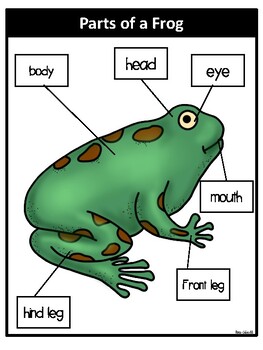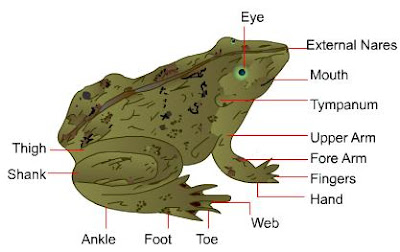
The male leopard frogs make their sperm in the summer, and by the time they begin hibernation in autumn, they have all the sperm that are to be available for the following spring's breeding season. In many species, the eggs are enclosed in a jelly coat that acts to enhance their size (so they won't be as easily eaten), to protect them against bacteria, and to attract and activate sperm. When it has completed this first meiotic division, the egg is released from the ovary and can be fertilized. This is necessary because the egg had been “frozen” in the metaphase of its first meiosis. (B) Frogs mate by amplexus, the male grasping the female around the belly and fertilizing the eggs as they (more.)Īnother ovarian hormone, progesterone, signals the egg to resume its meiotic division.

(A) As the egg matures, it accumulates yolk (here stained yellow and green) in the vegetal cytoplasm. Seminal Vesicles - Enlarged distal sections of the male frog’s urinary ducts that collect sperm prior to entry into the cloaca.Early development of the frog Xenopus laevis. Testes - Male sex organs that produce sex cells (sperm). Oviducts - Tubes of a female frog’s reproductive system that carry eggs from the ovaries to the cloaca. Ovaries - Organs of the female reproductive system that produce the eggs. Adrenal Glands - Organs located near the kidneys which secrete hormones. Urinary Ducts - Tubes in a frog that carry urine from the kidneys to the cloaca Urinary Bladder - The organ that collects and stores urine until released. Cloaca - Organ through which the products of the frogs digestive and urogenital system pass when discharged from the body. Needed for hibernating and mating Spleen - Organ in the frog’s circulatory system that makes, stores, and destroys blood cells. Fat Bodies - Masses of fat in the body cavities of frogs. Liver - Secretes bile and processes digested food molecules Urinary Bladder - The organ that collects and stores urine until released. Large Intestine - Posterior organ of the digestive system which stores undigested food. Gall Bladder - Sac which stores bile.ĩ Functions of the Internal Anatomy of a Frog: Duodenum - The anterior (front) part of the small intestine into which food passes from the stomach Pancreas - Gland which secretes digestive enzymes into the duodenum. Small Intestine - The principal organ of digestion and absorption of digested food. Stomach - Stores food and mixes it with enzymes to begin digestion.

Cloacal Opening - Opening of cloaca through which undigested food, urine, eggs, and sperm are passed.Ĩ Functions of the Internal Anatomy of a Frog:

Nictitating Membrane - A transparent part of a frog’s lower eyelid that moves over the eye to clean it and protect it. Eustachian tube openings - Openings in the mouth that lead to tubes that connect to the middle ear to equalize air pressureĦ Functions of the External Anatomy of the Frog Vomerine Teeth - Small projections in the top of a frog’s mouth that function in holding captured prey. Video Here Maxillary Teeth - Sharp teeth in the maxilla of a frogs mouth that function to hold captured prey. Tongue - Muscular structure attached to the front of the mouth which is extended to catch insects (its food). Tympanic Membrane - The eardrum - receives sound waves Glottis - The opening from the mouth into the respiratory systemĤ Functions of the body parts that make up the frog’s head Esophagus - Tube that connects the mouth and the stomach in a frog. Presentation on theme: "Frog Body Parts and Functions"- Presentation transcript:ģ Functions of the body parts that make up the frog’s headĮxternal nares or nostrils - Anterior openings for the entry or exit of air.


 0 kommentar(er)
0 kommentar(er)
